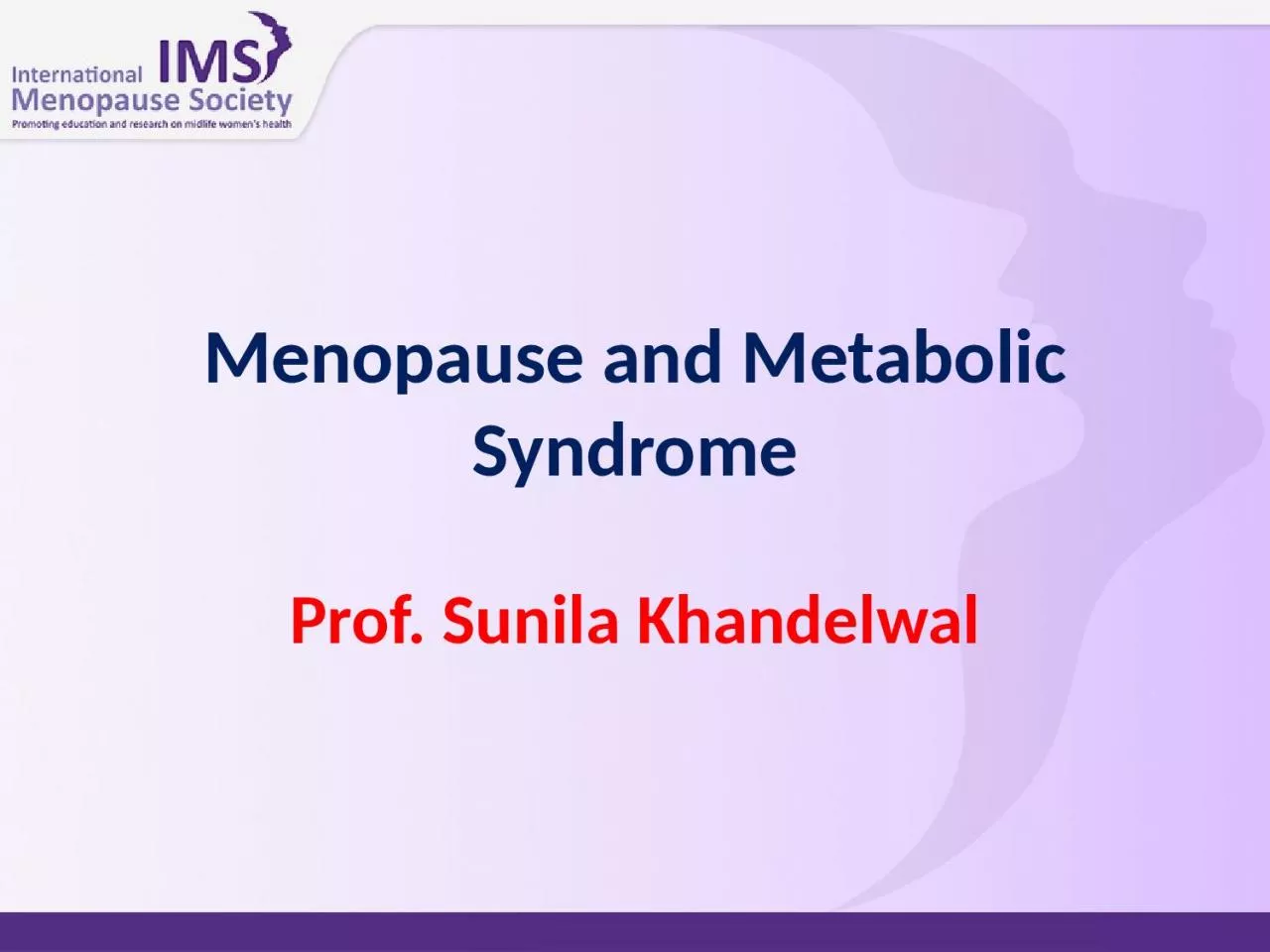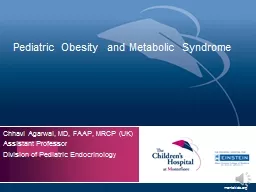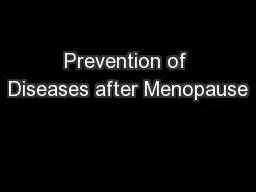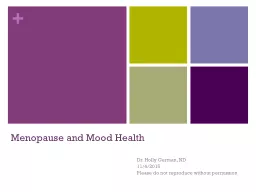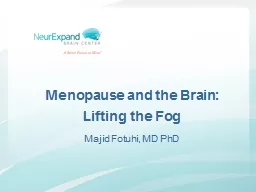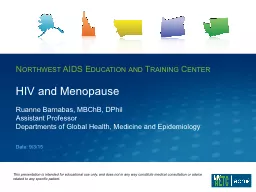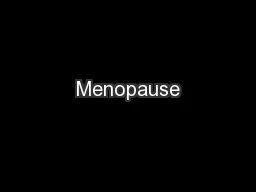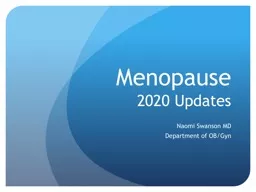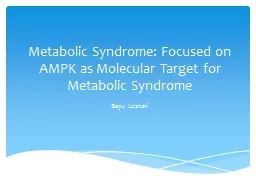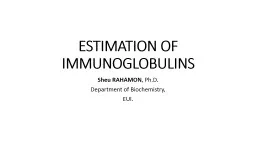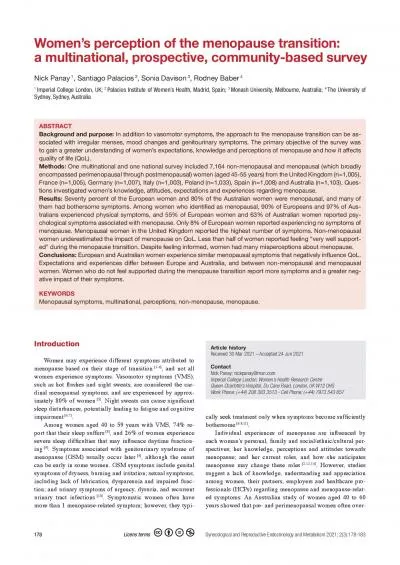PPT-Menopause and Metabolic Syndrome
Author : teresa | Published Date : 2023-07-18
Prof Sunila Khandelwal Metabolic Syndrome An Epidemic and increasing worldwide Met S is a rising disease entity still remains under diagnosed 152 times more common
Presentation Embed Code
Download Presentation
Download Presentation The PPT/PDF document "Menopause and Metabolic Syndrome" is the property of its rightful owner. Permission is granted to download and print the materials on this website for personal, non-commercial use only, and to display it on your personal computer provided you do not modify the materials and that you retain all copyright notices contained in the materials. By downloading content from our website, you accept the terms of this agreement.
Menopause and Metabolic Syndrome: Transcript
Download Rules Of Document
"Menopause and Metabolic Syndrome"The content belongs to its owner. You may download and print it for personal use, without modification, and keep all copyright notices. By downloading, you agree to these terms.
Related Documents

